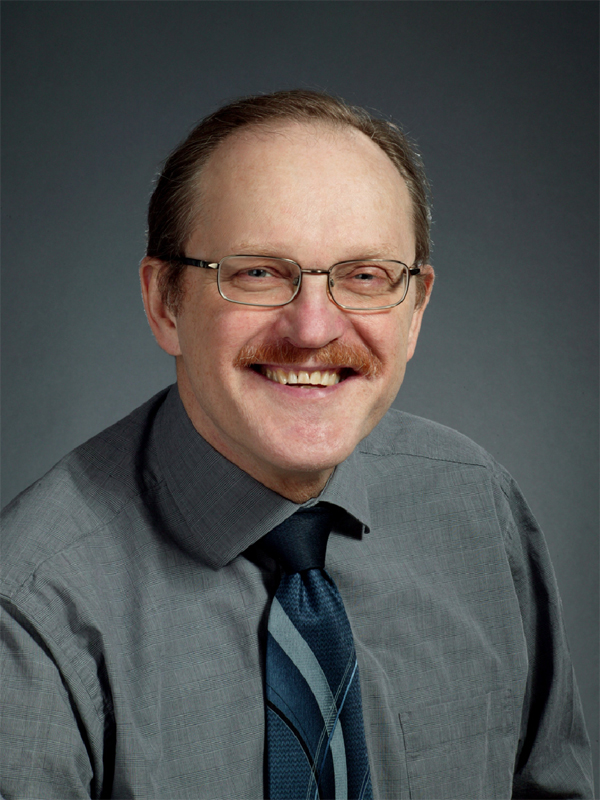The IASTED International Conference on
Wireless Communications
WC 2011
June 1 – 3, 2011
Vancouver, BC, Canada
KEYNOTE SPEAKER
Cognitive Femtocells: A new paradigm for Personal Wireless Communications
Abstract
Cellular telephone companies are continually under pressure to provide new services and devices to their users and as result they are using up increasing amounts of scarce bandwidth. In 2008 the average American Smartphone user downloaded about 150 Megabytes of data per year; by 2015 this figure is projected to be in the order of 7 Gigabytes. The rate of growth in bandwidth demand is staggering as Smartphone bandwidth demand is doubling every 15 months.New radio spectrum is not being supplied at this rate and even if it were, based on recent spectrum auction prices, it would not be viable to just throw spectrum at the problem. New technical solutions are required that provide more effective use and reuse of bandwidth. Some new technologies like LTE cell standards using MIMO show significant promise by improving spectrum efficiency. However the viability of this 4G technology to meet the demand over the long term is also questionable. The infrastructure costs will be even larger than 3G as LTE base stations will need to be deployed every 500 meters or less and must be capable of supporting multi-megabyte downloads to video Smartphones at these distances. Alternatives, such as throttling the existing technology by limiting user capacities, will not make for happy customers nor address the demand issue.
Faced with such concerns cellular systems designers have been discussing other technologies that offer alternative bandwidth distribution approaches. Martin Cooper, one of the pioneers of cellular noted that bandwidth use could be multiplied by up to 1600 times provided that radio cells became sufficiently small. Femtocells would have an operating radius of a few dozen meters and would be considerably simpler than base stations . Their ability to support efficient MIMO technology would be a better bet. There are drawbacks however. With Femtocells, as their density increases so does the potential for radio interference. Compounding this problem is the fact that LTE systems, with their stringent synchronization requirements, sustain performance degradation under high interference conditions.
One solution to these problems could be to use Cognitive Radio technology in Femtocells. Cognitive radios are adaptive radios that have the ability to sense interference and exchange information on the state of their radio interference environments. Conceivably such radio systems would operate under a series of rules where bandwidth is distributed in an equitable manner, based on demand, and where there is a systemic, collaborative effort to control the amount of radio interference that they generate.
It is envisioned that Cognitive Femtocells could be installed at the user's premises and would interface with the DSL and cable links that already form an internet distribution infrastructure within cities. How this infrastructure is to be used and what demands will be made on it by Cognitive wireless systems is both a regulatory and technical concern requiring careful study and the drafting of new standards. The internet was not designed to meet the mobility requirements of cellular applications.
The use of Cognitive radio technology will affect our thinking about how we license spectrum. For example, should we continue to sell spectrum if Cognitive Radio technology allows us to rent it? The technology could enable incumbent owners to sub-license their spectrum and retain revenue doing this. Should there be a method of penalizing Femtocells that create excessive interference and deny access to adjacent users? Also what roles do independent wireless services providers have in these models? In Europe for example, some wireless service providers have no spectrum licenses but are providing services based on license-exempt spectrum alone.
This talk will review the state of research and development on Cognitive Radio technology and networks and discuss the promises and the technical and regulatory challenges that surround this new technology. Cognitive Radio technology is becoming prominent in the discussions on a wireless rebirth that will see a deeper human to machine connectivity arise as wireless connectivity becomes pervasive. Its impact on the evolution of the cellular radio will be profoundly disruptive and unavoidable.
Biography of the Keynote Speaker

John Sydor works at the Communications Research Centre (CRC) in Ottawa as the research manager of the Research Broad Band Wireless (RBBW) Group which has developed a number of novel satellite and terrestrial communications technologies for commercial and government applications. He has published over 40 papers and holds 7 patents related to wireless devices and systems. He helped establish a number of successful wireless companies in Canada and has worked closely with Canadian industry in the development and transfer of wireless technology. He has acted as a technical consultant in the creation of new regulations and policy in Canada and the ITU, principally on issues related to the ISM band. He contributed to the writing of the IEEE 802.16/16h (WiMAX) standards for local and metropolitan area wireless networks. Currently he is Canada’s representative on Europe’s COST-TERRA IC0905 initiative that is helping define cognitive radio regulations and policies. For over 10 years his RBBW group has pioneered the development of cognitive radio technology and MIMO systems for cellular and rural wireless applications, work which involves research collaborations with national and international agencies and universities. RBBW has close ties to wireless companies, universities, and service providers and facilitates the bridging of technology between the academic, government, and private sectors. John is a professional engineer with a B.Ap.Sc from the University of British Columbia and has undertaken graduate studies at the Carleton University, the University of Ottawa, and UBC.









